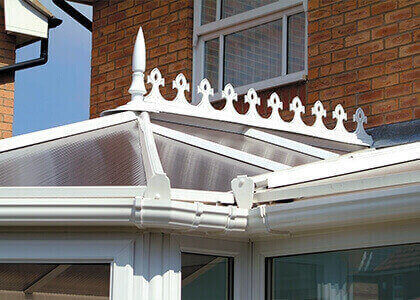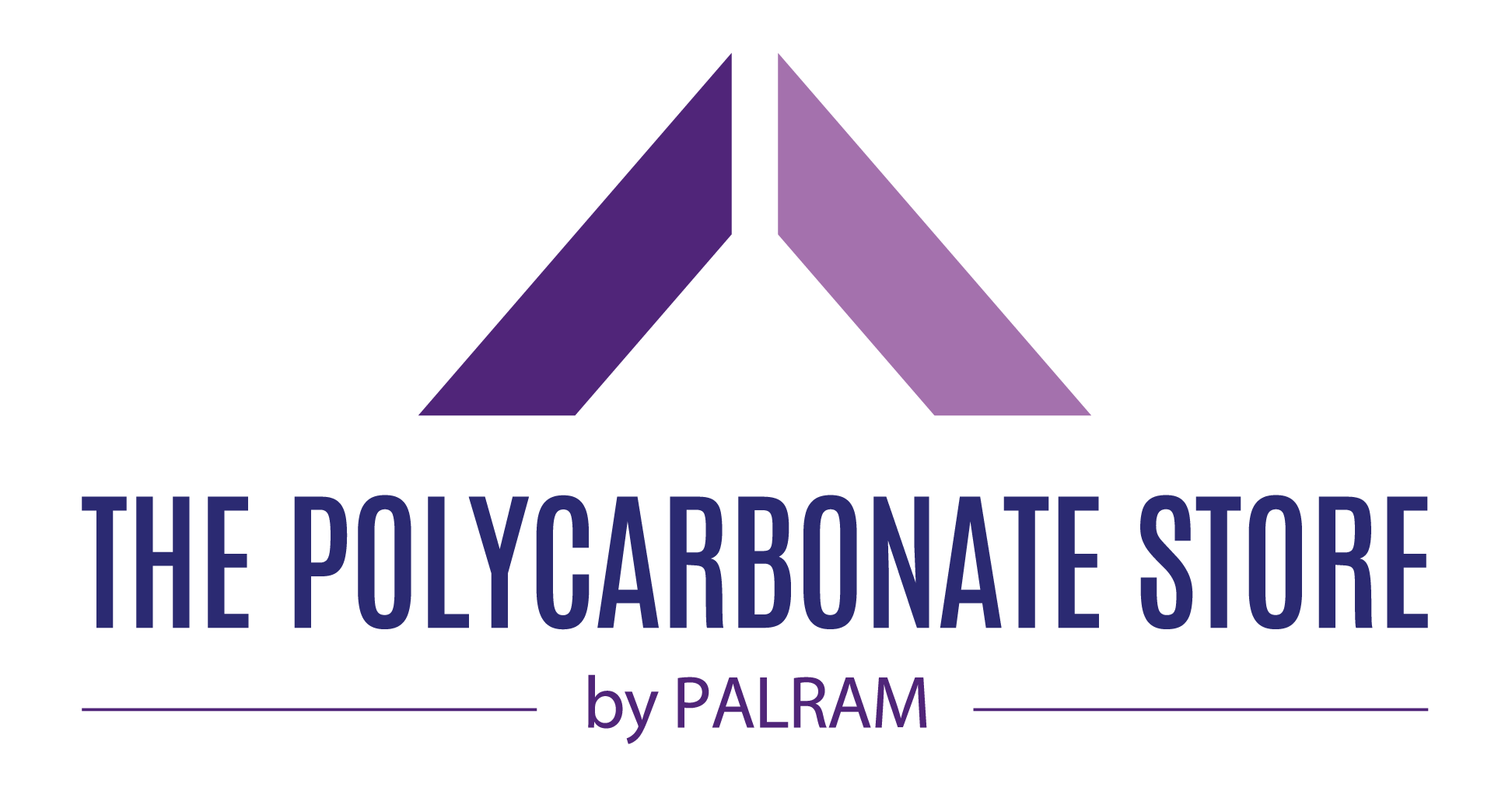Polycarbonate: What is it Used For? | The Polycarbonate Store
Polycarbonate plastic has many uses across a variety of industries, with versatile applications and effective results. You probably see polycarbonate material everywhere, every day but you just don’t realise it. So, where is polycarbonate most commonly used?
Polycarbonate (PC) is an extremely versatile engineering thermoplastic that has become widely used in many industries, including manufacturing, construction and technology. The most common polycarbonate uses are roofing, glazing, medical devices, safety equipment and media disks, such as CDs.
Read on for a more in-depth look at how polycarbonate is used in different applications and industries.


What Are the Main Uses of Polycarbonate?
Polycarbonate has a wide range of uses and is used by manufacturers, builders, engineers and DIYers. Here’s an overview of some of the most common uses:
- Safety equipment. Due to its strength polycarbonate is commonly used in safety panelling, protective screens and vandal-proof windows and armoured vehicles for military and police. It’s also common in protective headwear, including face shields, safety goggles and helmets.
- Construction materials. Polycarbonate sheeting is often used as an alternative to glass where longevity and performance are important. Its physical strength, durability and ability to diffuse light make it superior to standard glass in many ways. Polycarbonate also assists with temperature control, even in direct sunlight, making it a thermally efficient choice.
- DIY projects. Polycarbonate sheets have many DIY uses, such as replacing broken greenhouse glazing and in awnings and roofs.
- Glazing and roofing. Polycarbonate sheets are often used in roofing and glazing for sheds, greenhouses, carports, canopies and conservatories.
- Medical equipment and devices. This plastic is commonly used in media devices, such as dialysis machines, where durability and transparency are important. It’s also common in eyeglasses and camera lenses due to its lightweight properties.
- Consumer products. Polycarbonate is used in a huge range of consumer products, including lightweight luggage and food containers.
- Media disks, including Blu-rays, DVDs and CDs.
- Telecommunications hardware and electronics, including smartphone covers and laptop casings.
- Automotive and aircraft components, such as headlamps and windscreens.
- Kitchen panelling for cupboards and hard-wearing industrial kitchen spaces.
- Appliances, such as air conditioners, refrigerators, and washing machines.
- Lighting, including light fixtures and LED light diffusers.
Which Industries Are Polycarbonate Used In?
Polycarbonate is common in a range of industries because of how versatile the material is.
Medical Industry
In the medical industry, polycarbonate is commonly used because it’s easy to sanitise and doesn’t warp at high temperatures. It’s found in:
- Machinery casings
- Lenses and cameras
- Lighting equipment
- Digital appliances used for monitoring
- Accessory equipment including injection stopcocks and IV line equipment.
Manufacturing Industry
We may not even notice that many products we use every day contain polycarbonate.
Although many consumer items use light and cheap plastics, there are some which utilise this incredibly strong and tensile plastic.
Consumer items that can contain polycarbonate include:
- Luggage cases
- Bike frames
- Car roofs
- Tailgates
- Water bottles
- Swimming pool enclosures
- Ski goggles
- LED lighting
Polycarbonate has become the plastic of choice and it’s a durable and strong alternative to other materials for consumer products.
Building Industry
Polycarbonate is one of the stronger materials used in construction and is 250x stronger than glass. This makes it a durable and tough option for building projects.
The building industry uses polycarbonate sheeting due to its benefits over glass. Polycarbonate is often preferred over glass because of its ability to diffuse light and filter it through in various colours. It absorbs heat making it ideal for temperature control (resulting in slightly cooler rooms even in direct sunlight).
The shatterproof nature of polycarbonate means it's ideal for not only roofing but also perfect for garden sheds and greenhouses in particular. We’ve also seen more use of polycarbonate in garden properties because of its contribution towards reducing greenhouse emissions.
Technology Industry
The world of technology is expanding all the time and there is a big push towards efficient plastics and durable materials which help reduce carbon emissions. This is especially important as more companies are becoming more eco-friendly and sustainable.
There are many technology products which utilise the benefits of polycarbonate, including:
- Mobile phones
- Media and medical equipment
- Computer scanners
- High-tech automotive designs
Ultimately, polycarbonate is considered a durable, versatile and efficient material which can enhance any product it’s used in and that’s why many brands incorporate it into their designs.
Polycarbonate Sheets at The Polycarbonate Store
The Polycarbonate Store is the UK’s largest supplier of high-quality polycarbonate sheets that are suitable for a wide range of applications. Our polycarbonate sheets are available in a range of thicknesses and colours and can be cut to size to suit your needs.
We offer:
- Solid polycarbonate sheets
- Corrugated roofing sheets
- Twinwall or multiwall polycarbonate sheets
- Polycarbonate greenhouses
Browse the range today or get in touch with our expert team if you have any questions.
Polycarbonate Uses FAQs
What Is Polycarbonate?
Polycarbonate is a thermoplastic. This material can absorb heat, making it ideally suited for use in greenhouses, homes and sheds. It’s also very lightweight and durable and is commonly used in construction and manufacturing as an alternative to glass.
Read our blog, ‘What is Polycarbonate?’, for more detailed information.
What Are the Uses of Polycarbonate Sheets?
Polycarbonate sheets are commonly used as an alternative to glass in construction, building and DIY projects. Here are some common polycarbonate sheet uses:
- Roofing for sheds, houses, conservatories and lean-to structures.
- Doors and windows. Polycarbonate sheets can be used as an alternative to glass.
- Greenhouses. These sheets are often used to replace broken greenhouse panels or to construct a greenhouse from scratch.
What Are the Uses of Polycarbonate vs Acrylic?
Polycarbonate and acrylic plastics are often confused, but they are different materials and have different uses.
The main difference between them is that acrylic has 10 times the impact resistance of glass, while polycarbonate has 250 times the resistance. This makes polycarbonate sheeting the preferred choice when durability and strength are required, such as for safety glass and roofing. Polycarbonate can also be heated, cooled and recycled making it a more sustainable choice.
However, acrylic is more transparent, has a high gloss finish and is less expensive than polycarbonate. This makes it better suited for everyday applications, like retail store displays. Acrylic sheeting can also be used in greenhouses and shed windows as it’s still stronger and lighter than glass panels.
For a more in-depth comparison between these two materials, read our blog, ‘Polycarbonate vs Acrylic’.


